You’re great at raising livestock or growing crops, but have you ever thought of farming carbon? While it may not the first thing you think of cultivating, carbon is increasingly profitable, works alongside your current farming operation, and can even increase productivity.
What is Carbon Farming?
Key to the success of carbon farming is carbon sequestration. Sequestration is a naturally-occurring process where carbon is absorbed by the landscape and becomes stored in soil or converted to new growth by vegetation. The emission of CO2 into the atmosphere is the leading cause of climate change, and reducing carbon release remains the core aim of carbon farming projects.
Carbon projects avoid carbon emissions and increase carbon sequestration through changes in land management practices, but that doesn’t mean you have to lock up your land or de-stock. If done well, carbon projects complement existing operations to deliver benefits for business as well as the environment.
Carbon Farming in Australia
In Australia, land managers have participated in carbon farming initiatives since 2011, when the first scheme was introduced through the Emissions Reduction Fund.
Today, carbon farming has evolved in size and scope, with around 100 million carbon credits awarded to successful projects under the Emissions Reduction Fund (ERF) to date. Each project uses an approved methodology that suits its location, farming practice, land availability and land-use history. There are approximately 1,000 projects currently registered across all States and Territories in Australia and demand for high quality, high integrity carbon credits in the voluntary sector is increasing. McKinsey estimates that globally 95 million carbon credits were retired by voluntary buyers in 2020 alone, and expects demand to be 15 times higher by 2030.
Funding For Carbon Farming
The ERF is a government-run offsets program which allows land managers to implement carbon storage or emissions reduction (commonly known as abatement) activities to generate and sell carbon credits. These activities can include changes to vegetation clearing regimes, revegetation and pest control management strategies, changes to tilling, chemical and land use systems, and altered fire management practices. These methodologies (outlined below) reduce vegetation suppression and soil degradation, in turn increasing the carbon sequestration potential of the land.
The carbon credits land managers are awarded for successful projects are called Australian Carbon Credit Units (ACCUs) and represent one tonne of stored or avoided carbon dioxide (or non-carbon greenhouse gas equivalent) (tCO2-e). All ACCUs are awarded through approved management activities and methodologies.
Carbon credits (ACCUs) are purchased by the government, through the Emissions Reduction Fund, or by individuals and companies wishing to voluntarily offset their emissions – a trend that is growing exponentially.
At the highest end, the global voluntary carbon market is predicted to be valued at more than $50 billion by 2030. The ACCU spot price reached $22 at the end of July 2021 and some commentators predict that it will double by 2030.
Eligible Carbon Farming Methods
Carbon farming methodologies available through the Clean Energy Regulator (CER) range from savanna burning projects and vegetation management projects to changes in on-farm agricultural systems. There are a variety of ways to participate and profit.
Vegetation projects achieve net carbon reductions by maximising the amount of on-farm vegetation available to store carbon. There are a number of eligible activities that may be implemented for vegetation management:
- Human-Induced Regeneration projects aim to regenerate parts of a property where vegetation has previously been or is currently being suppressed – usually by mechanical or chemical destruction, or overgrazing by livestock and feral animals. Management practice changes such as the installation of infrastructure to enable rotational grazing, and effective management of feral animals allows natural regrowth of native vegetation. Regenerated bushland and forests decelerate greenhouse gas release and store carbon, while improving soil health, water retention and biodiversity.
- Avoided Deforestation projects preserve areas of native forest which have previously received government consent to be cleared and converted to cropland or grassland. Projects generate carbon credits for landholders who maintain the forest and do not clear the land. Carbon abatement is achieved by not clearing native vegetation and avoiding the release of emissions.
- Avoided Clearing projects protect growing forest from future scheduled clearing. Carbon is stored in native regrowth that is scheduled to be cleared under a property’s historical clearing regime. To be eligible there must be evidence of two historical clearing events that have occurred where unrestricted clearing was permitted and cropping or grazing has been undertaken.
There are also other valuable methods and carbon abatement strategies that place more emphasis on altering existing farm systems.
- Soil Carbon projects earn carbon credits by storing carbon in soil, a process stacked with ecological benefits proven to boost soil quality and therefore, cattle and crop yield. Soil carbon sequestration and regenerative agriculture is seen as the most important and cost-effective system for storing and abating global CO2 levels. Environmental consultant Energetics suggest that improved farming and land management as well as low carbon transport could contribute to most of Australia’s abatement targets by 2030. Many techniques can be used to build soil carbon, and can include:
-
- Increasing the input rate of carbon, through the planting of vegetation or input of compost or mulch
- Changing fertiliser application and timing
- Altering irrigation methods
- Decreasing activities that cause carbon loss, such as stubble burning or vegetation clearing
- Changing grazing and tilling practices to reduce soil impact and disturbance
- Altering the soil profile to a composition that increases residence time of carbon in the soil, such as adding clay to sandy soils
Beef Herd Projects involve cattle and dairy farmers across livestock, grazing, and broadacre farming. These methods provide carbon abatement and productivity benefits by improving the overall health, nutrition, age structure and productive efficiency of cattle to reduce emissions and generate carbon credits. Projects have to be undertaken on a sufficiently large herd of 10,000 head or greater, and may include dietary adjustments, reducing the average age of the herd, reducing the proportion of unproductive cattle or changing the number of cattle within each livestock class within the herd.
- Animal Effluent Management Methods are for farmers with piggeries or dairies and reduce emissions by introducing new ways to treat waste by destructing methane.
Key Benefits
Land managers with carbon farming projects are paid directly for the environmental service of carbon storage or abatement, creating a new, diversified and additional income stream. But there are many other benefits beyond direct revenue that come with each project. Carbon farming creates specific key benefits for land managers, producers, communities and the environment – enhancing the long-term productivity and sustainability of the land.
“We realised early on that if we don’t look after the environment we’re not looking after our business. We’re contributing to the environment so it’s nice to get paid for it.” – Michael Rosser
Additional income from carbon credits allows for further investment in land and business:
Environmental Benefits
- Restoring on-farm diversity in native flora
- Improving habitat size and quality for native wildlife
- Improving water quality and stream health
- Reducing erosion, run-off, and river sedimentation
- Improving soil health, water retention and biological diversity above and below ground.
On-Farm Benefits
These environmental improvements don’t just help the landscape, they benefit the farm too. GreenCollar’s carbon farming projects have the express aim of working with farmers to optimise the productivity and profitability of their current farming operations. Positive on-farm results can include:
- A diversified, stable income stream not reliant on commodity prices
- Ability to invest in on-farm infrastructure such as fencing, water points and trap yards
- Improved control of feral animal populations
- Reduced grazing pressure, erosion and run-off
- A more resilient business, better able to withstand the impacts of drought or extreme weather events
- An ability to de-stock earlier in the event of drought
- Improved animal health
- Higher productivity due to increased water retention and soil health
Social Benefits
- Ability to invest back into the local community via infrastructure upgrades
- Job creation
- Skills development
Further Financial Benefit
- Once land managers have generated credits they can sell them on to the Australian government during their biannual actions, to a business or State government at market rates through a fixed commercial agreement, or through the increasingly lucrative voluntary market. Demand in the voluntary market is growing, and recognises high quality, high integrity credits. Buyers are willing to pay a premium for projects that have a strong story to tell around key benefits such as land regeneration and biodiversity improvements, habitat provision for native species, or investment in local communities and job creation.

Get Involved
Getting involved in carbon farming can be done independently or with a partner. In partnering with land managers, GreenCollar adopts a revenue sharing model, wherein we take a 30% revenue share of the project—incentivising best market price and optimal credit production as well as eliminating any fees for project setup and facilitation.
GreenCollar is the leading participant in the Emissions Reduction Fund and now the Climate Solutions Fund auctions, run by the Clean Energy Regulator to secure contracted offtake for ACCUs. We are also at the forefront of the voluntary market, actively working to generate new demand for high quality, high integrity ACCUs. We work with land managers to build tailored narratives that differentiate ACCUs and maximise value.
After confirming eligibility, GreenCollar’s technical team will calculate the commercial viability of the project and work with the land manager to ascertain their desired outcomes. After project development, which includes on-ground visits, the project can be registered. Upon successful registration, the land manager will commence project activities and GreenCollar undertakes data collection, monitoring and reporting of the project. Pending stakeholder consents, after approximately 18 months the first ACCU payment may be received, with ongoing periodic payments for the life of the project. For more information contact GreenCollar.
Partnering with GreenCollar on carbon farming projects is more than just a pathway to landscape rehabilitation. It’s a way for land managers to earn diversified income for their farm.
Providing income, jobs and security to regional and rural communities








